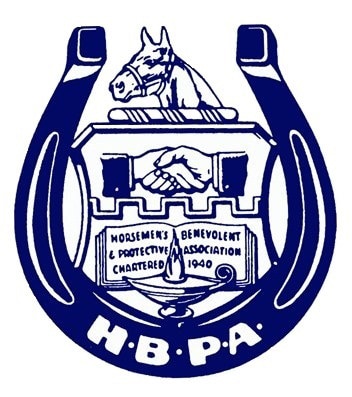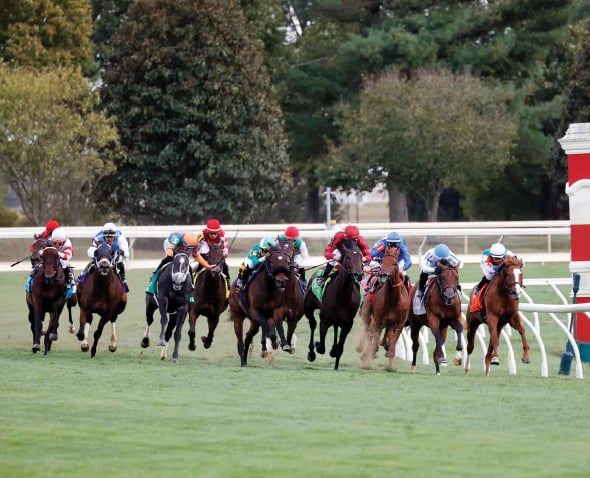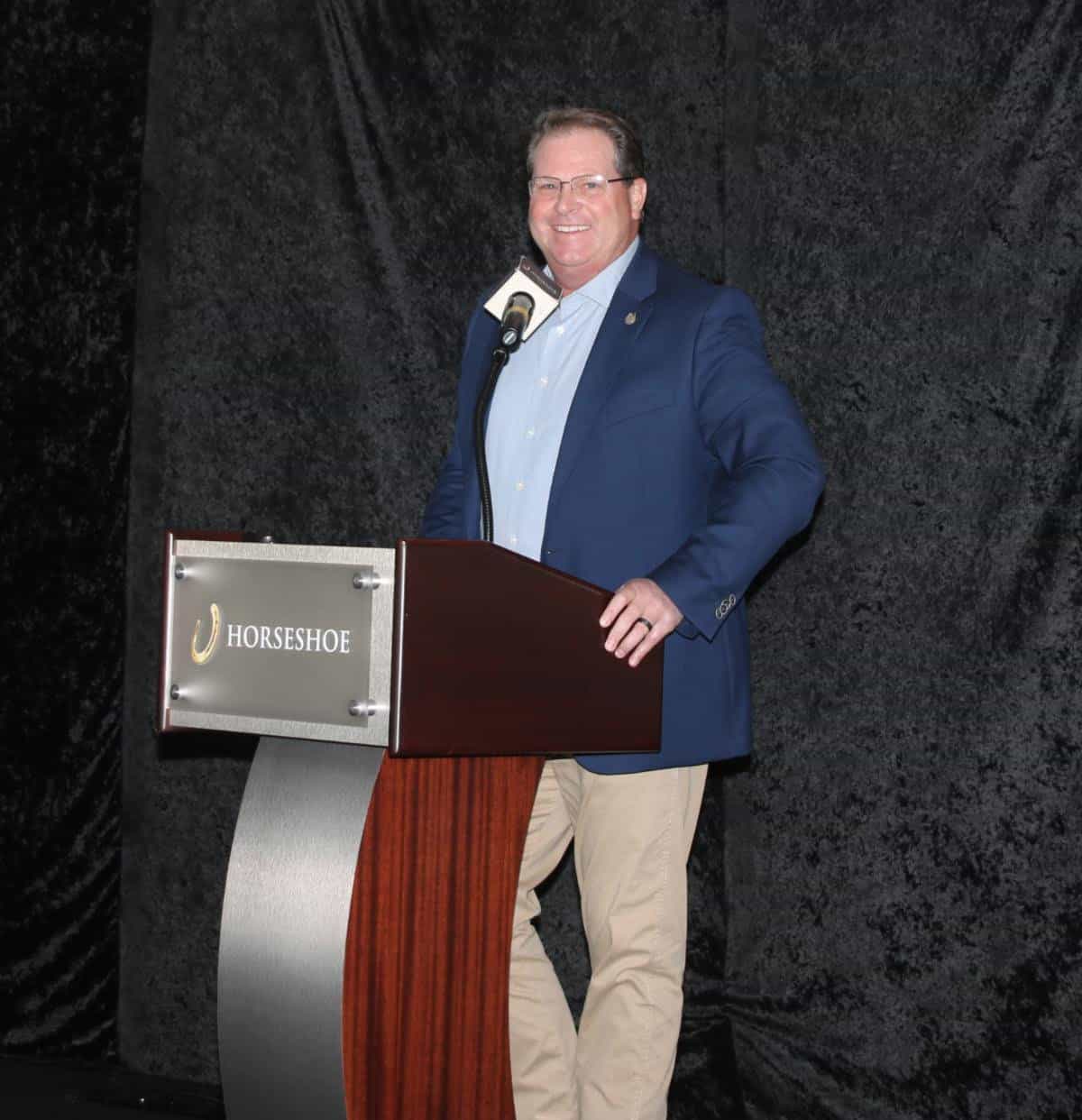Message from National HBPA CEO Eric Hamelback

National HBPA CEO Eric Hamelback with Remington.
It is clear to me that the Thoroughbred racing industry has surpassed most, if not all, other equine sports and breeds in showing both genuine concern and financial commitment to the welfare of its horses as they exit the racetrack. But make no mistake: In my opinion, more can and should be done. We must continue to remind the public and non-racing horse people that racing industry participants are the leaders in taking care of our horses when they are retired.
Many of you know the story of my own off-the-track Thoroughbred (OTTB) named Remington. I hope you read about him in the spring issue of The Horsemen’s Journal (if not, click here to read it). The excellent article was written by my friend Jen Roytz, who serves as executive director of the Retired Racehorse Project (RRP) and as a National HBPA Aftercare Committee advisor.
While I do not have a record of Remington’s races or even his pedigree, I know that he was a registered Thoroughbred because of his lip tattoo, which was not fully legible. He might have been a stakes winner on the track, or maybe he never started a race. More than likely, he was somewhere in between, but to me, it didn’t really matter. I had to put Remington down on July 13 after being partners since 1996. I didn’t even know his exact age due to his illegible tattoo, but I do know he was well into his 30s and that he lived a great life. He was a special Thoroughbred with whom I shared a special bond, much like the bond I trust everyone reading this also shares with their horses.
Success or lack thereof on the track shouldn’t matter when it comes to a horse’s life after the track. While major stakes winners or those with million-dollar pedigrees often get the headlines when they end up in unfortunate situations after leaving the track, should that distinction really matter? As Mr. Ed taught us (Google his name if you don’t know him), a horse is a horse, of course. So we need to strive to take care of as many horses as we can, regardless of what their race records say.
Many organizations have successfully transitioned OTTB horses into new lives after their days at the track are complete. One of those, in particular, has been the Retired Racehorse Project, which since 2010 has helped inspire thousands to invest in OTTB horses. There is no doubt the popularity and value of the OTTB has helped our entire industry raise positive awareness for our equine athletes after their racing careers are complete. This year, on October 4-7, the RRP event is back in Lexington, Kentucky, at the famed Kentucky Horse Park for the Thoroughbred Makeover, presented by Thoroughbred Charities of America. If you are asking #WhereIsThePositive, look right here. For 2018, almost 800 trainers have been accepted to compete in the event.
Many more organizations than I can list and even some state breeders associations such as Pennsylvania and Louisiana are stepping up to support our industry’s need for OTTB aftercare. And, of course, so are countless individual horsemen.
My hope is more organizations will incentivize owners, breeders and members to make an investment in the future of our Thoroughbreds by committing to programs such as these. We all hold a responsibility to aid retired horses in securing productive lives after their time on the track is complete. Programs such as the RRP give retired racehorses the ability to show the versatility and beauty of the Thoroughbred while also highlighting their continued usefulness.
It is up to those of us in the industry to continue the conversation about transitioning good, valuable and sound horses into second careers. I believe there are very few horses out there in the racing industry that are in need of “rescue.” Rather, I see and imagine the off-track Thoroughbred as a horse who is being trained for a second career and who is in transition. What these horses need are people seeing and understanding the value in owning an OTTB. It is through events like the RRP Thoroughbred Makeover that we must continue to raise the awareness and value for these horses, thus proving how successful an OTTB can be in a second career and beyond.
I hope you will agree with me on how important it is to make sure we plan for our horses to be treated well after their racing careers are done and to help facilitate their transition into their second career.
Let us not forget the reason most of us are in this industry: It is because we love horses. We need to not only remind ourselves but also continue to broadcast to others that our equine athletes are remarkable animals and that without them we do not have an industry.
Sincerely,
Eric J. Hamelback





